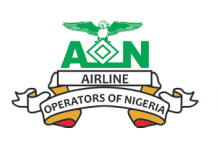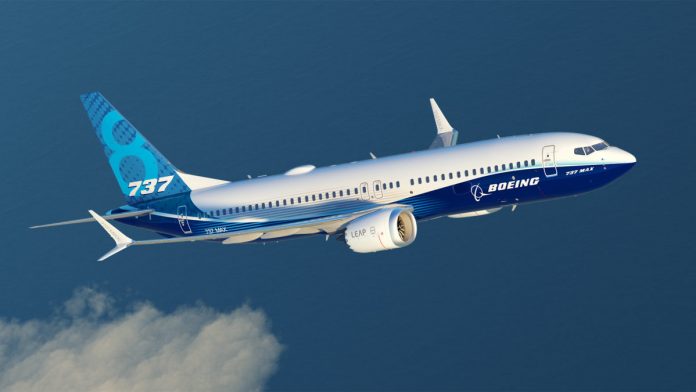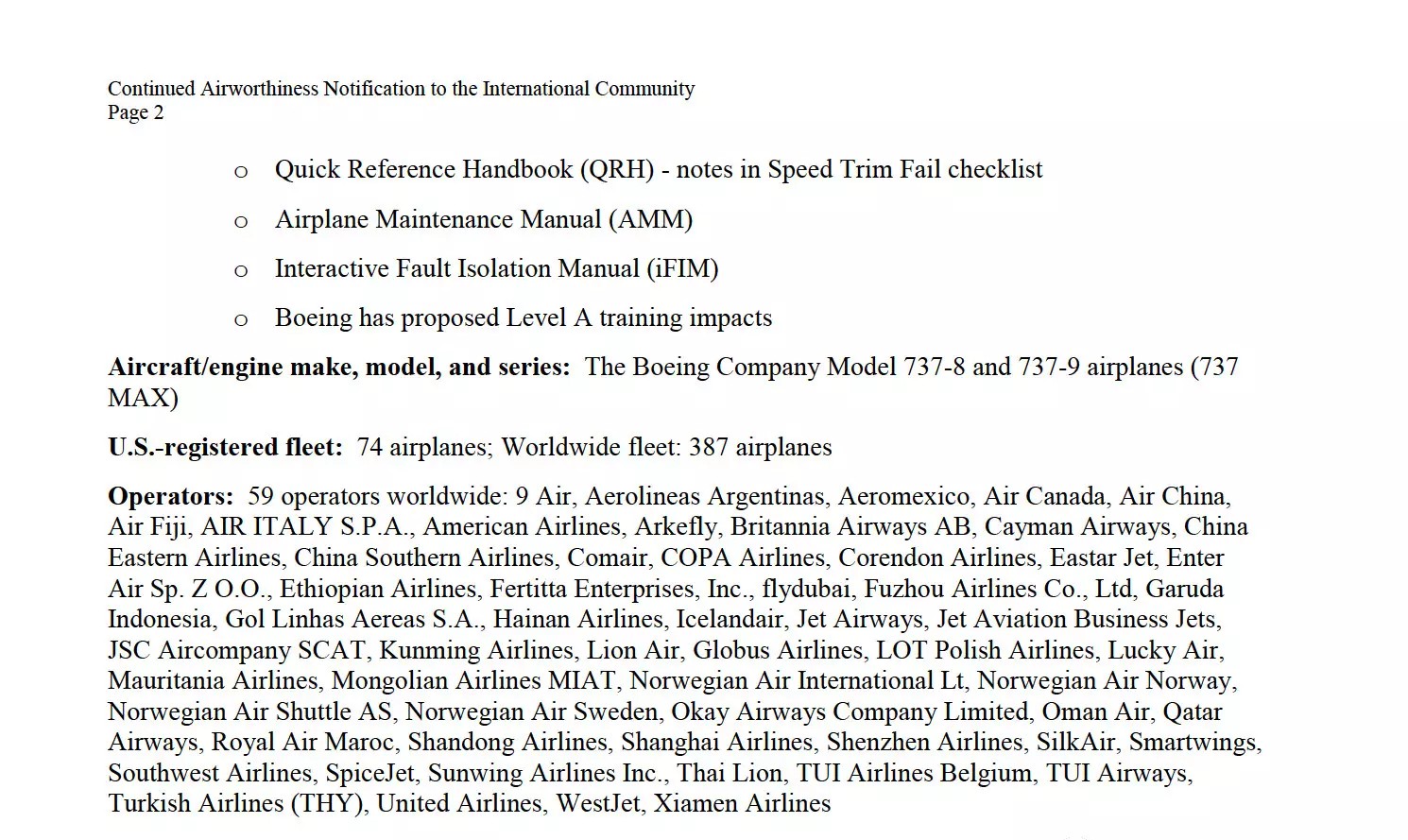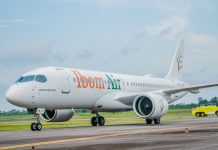Boeing has said it will deploy a 737 MAX software enhancement across the fleet in the coming weeks, incorporating feedback received from their customers. Boeing stated that it has been developing a flight control software enhancement for the 737 MAX which is designed to make an already safe aircraft even safer. Boeing made this known in a statement it recently issued out.
According to the aircraft manufacturer, the enhancement include updates to the Maneuvering Characteristics Augmentation System (MCAS) flight control law, pilot displays, operation manuals and crew training. The enhanced flight control law incorporates angle of attack (AOA) inputs, limits stabilizer trim commands in response to an erroneous angle of attack reading, and provides a limit to the stabilizer command in order to retain elevator authority.
The company stated that it has been working closely with the Federal Aviation Administration (FAA) on development, planning and certification of the software enhancement. It is expected that the authority will mandate software enhancement with an Airworthiness Directive (AD) no later than April.
This statement is coming on the heels of the recent Ethiopian Airlines crash which happened on Sunday, making it the second crash involving 737 MAX 8 in less than five months after the Lion Air which occurred in October 2018.
The company said a pitch augmentation control law (MCAS) was implemented on the 737 MAX to improve aircraft handling characteristics and decrease pitch-up tendency at elevated angles of attack. It was put through flight testing as part of the certification process prior to the airplane entering service. MCAS does not control the airplane in normal flight; it improves the behavior of the airplane in a non-normal part of the operating envelope.
Boeing’s 737 MAX Flight Crew Operations Manual (FCOM) already outlines an existing procedure to safely handle the unlikely event of erroneous data coming from an angle of attack (AOA) sensor. The pilot will always be able to override the flight control law using electric trim or manual trim. In addition, it can be controlled through the use of the existing runaway stabilizer procedure as reinforced in the Operations Manual Bulletin (OMB) issued on Nov. 6, 2018.
Corroborating this, the FAA said that it has not received enough evidence to warrant a grounding of the US fleet of Max aircraft, even as a growing number of aviation regulators around the world ordered a grounding of the type. It disclosed however that it was overseeing Boeing’s changes to the MCAS. It has therefore issued a Continued Airworthiness Notification to the International Community (CANIC) related to the Boeing 737-8 and Boeing 737-9 (737 MAX) fleet.
























